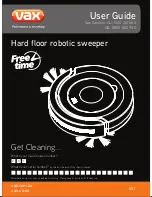
•
Never allow an untrained individual to operate the snow thrower. Understand the function of all the
controls and their proper operation. Know how to stop the machine and disengage the controls
quickly.
•
Always plan your snow-throwing pattern to avoid discharge of material toward people, pets and
property. Thrown objects can cause serious personal injury.
•
Keep people and pets at least at 22 m distance from the snow thrower while it is in operation. Stop
the snow thrower if people or pets enter the discharge area.
•
Always observe the surface conditions in order to avoid slipping or falling, especially when operating
in reverse.
Warnings regarding preparation and use
•
Always carefully inspect the area where the show thrower is to be used. Remove all objects (e.g.:
doormat, newspapers, stones and other foreign objects) that could be thrown by the auger/impeller or
cause the operator to trip.
•
Thrown objects can cause serious injury to the eyes and exposed body. Always wear safety glasses or
eye shields during operation and while performing an adjustment or repair.
•
Always operate wearing adequate winter outer garments. Do not wear jewelry, long scarves or other
loose clothing, which could become entangled in moving parts. Wear footwear that provides sure
footing.
•
Adjust collector housing height to clear gravel or crushed rock surfaces. Do not attempt to make any
adjustments while engine is running, except if specifically recommended in this Operator’s manual.
•
Before starting the engine, disengage all clutch levers.
•
Let the engine adjust to the outdoor temperature before starting to clear snow.
•
Gasoline is extremely flammable and the vapors are explosive which may result in serious injury or
property damage. Use extreme care when handling gasoline, avoid spilling gasoline on yourself or
your clothes. Wash your skin and change your clothes immediately if gasoline spills on them.
•
Extinguish all cigarettes, cigars, pipes and other sources of ignition when around gasoline.
•
Always use an approved gasoline container. Never fill containers inside a vehicle or on a truck or
trailer. Always place containers on the ground away from your vehicle before filling.
•
Always fuel machine outdoors, never indoors. Do not remove the gas cap or add fuel while the engine
is hot or running. Allow engine to cool at least two minutes before refueling.
•
Keep the nozzle in contact with the rim of the fuel tank or container opening at all times until fuelling is
complete. Do not use the nozzle lock-open device.
•
Provide space for fuel expansion. Fill the fuel tank to no more than 1.5 cm below bottom of filler neck.
Do not overfill the fuel tank.
















































